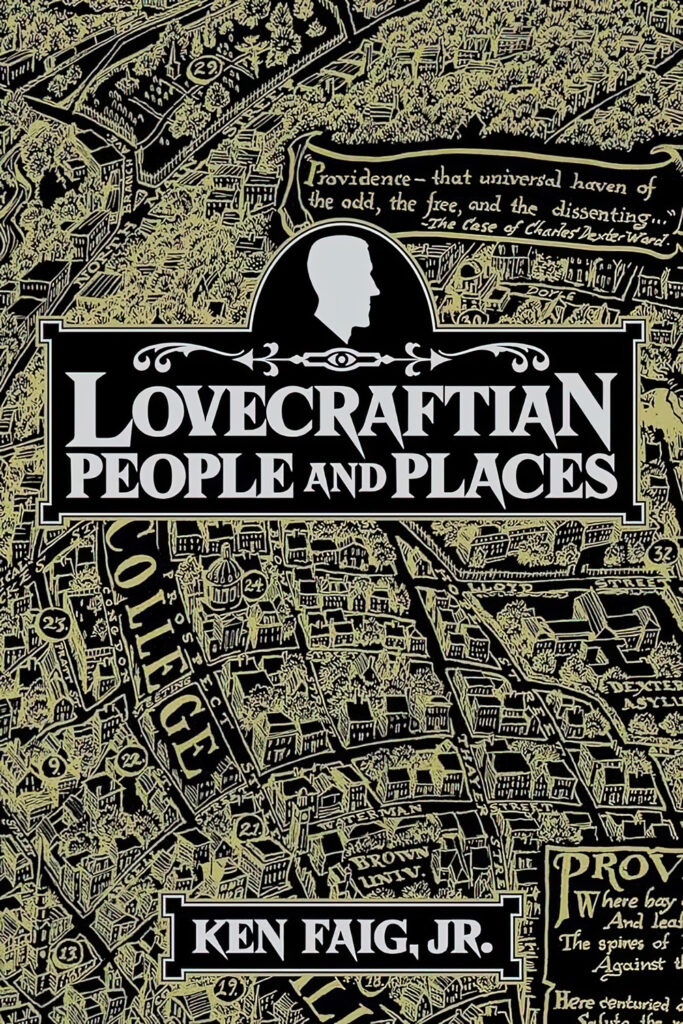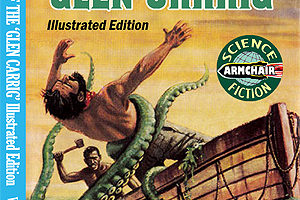 Two of his focuses have been on the ancestry of Lovecraft himself, and on Lovecraft’s relations with various friends and colleagues. His works have mainly been collected into three books from Hippocampus Press: The Unknown Lovecraft (2008), Lovecraftian Voyages (2017), and more recently Lovecraftian People and Places (2022).
Two of his focuses have been on the ancestry of Lovecraft himself, and on Lovecraft’s relations with various friends and colleagues. His works have mainly been collected into three books from Hippocampus Press: The Unknown Lovecraft (2008), Lovecraftian Voyages (2017), and more recently Lovecraftian People and Places (2022).
In Lovecraftian People and Places, we get 12 essays collected into four sections: Lovecraftian People, Lovecraftian places, the fiction, and amateur journalism. While these articles may be too esoteric to be of interest to the casual Lovecraft fan, for those wanting to know more about the man and his works, you should check this collection out.
For Lovecraftian people, we get four articles. The first traces Lovecraft’s ancestry through his paternal line back to Devonshire in England. Another looks at a possible “lost” scion of the Lovecraft family. Lovecraft’s neighbors at his last address are the subject of another.
I knew that Lovecraft lives for years with two of his aunts. I had always assumed, incorrectly, that they were spinsters or longtime widows. Not so. The last aunt he lived with in the final years of his life was Annie Philips Gramwell, whose husband Edward Francis Gramwell actually had a big influence on Lovecraft and was the editor of a local newspaper. He passed away a year before Lovecraft. Such that he was living with Mrs. Gramwell, who herself passed a few years later.
With Lovecraftian places, we get an article on Lovecraft’s birthplace and another on his final home. Another, which I found an interesting and in-depth worth, looked at the real building that was the inspiration for the home in The Case of Charles Dexter Ward.
There where only two articles on Lovecraft’s fiction. One looks at the possible influence of the works of John Osborne Austin, which are present in Lovecraft’s library. Another examines the ethnic names that appeared in “Dreams in the Witch’s House.”
I think most casual readers of Lovecraft are totally ignorant of his long-time involvement with amateur journalism. Of course, most people don’t even know what this is. But Lovecraft was involved in this for most of his life and he felt his efforts outside of fiction was his greatest work. One essay looks at the Providence Amateur Press Club and its members, and the other looks at his involvement with Elsie Alice Gidlow.
Some may be aware that Lovecraft in his work with amateur journalism got involved with the United Amateur Press Association, a rival to the older National Amateur Press Association. But fewer may not be aware, like me, that he actually was an officer in several roles within UAPA, including president in 1917-18. Though apparently due to problems within UAPA, he was president of one faction while Elsie Gidlow was elected president of the other faction. UAPA, by the way, collapsed some time in the 1930s, but NAPA still exists.
This was my first reading of Faig’s works. I haven’t yet got his other two collections but hope to at some point. Check out these collections and the others he has done.



